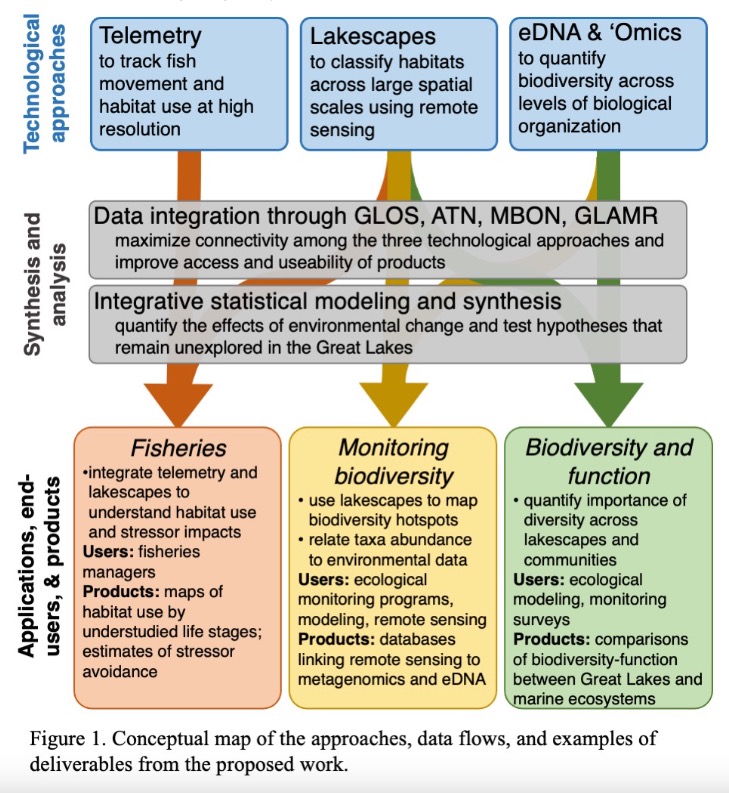This project will fill a critical gap in science and management of the Great Lakes by creating a BON that uses complementary technological approaches to address interconnections among dynamic pelagic habitats known as “Lakescapes”, biodiversity across the tree of life, movement of key fisheries species, and the role of diversity in supporting ecosystem functions.
Partners for GL-MBON include NOAA’s Great Lakes Environmental Research Laboratory, Great Lakes Observing System (regional IOOS association), Great Lakes CoastWatch node, NOAA National Marine Sanctuaries, Great Lakes Acoustic Telemetry Observation System, Oregon State University, and the Cooperative Institute for Great Lakes Research.

Ecosystem services and biodiversity in the Great Lakes are imperiled by multiple stressors including introduction of non-native species, eutrophication, climate change, and overexploitation of fisheries. Monitoring biodiversity in the Great Lakes is challenging due to their spatial extent and strong gradients that lead to patchy biogeochemical and ecological features. This project will deliver dynamic lakescape classification using satellite-derived variables that are specific to Great Lakes environmental dynamics. We will synthesize existing genomics databases and collect new eDNA data (metabarcoding and metagenomics) to assess diversity at different levels of biological organization. Fish movement data from GLATOS will be combined with lakescapes and environmental data to examine how those populations associate with pelagic habitats and respond to multiple stressors. We will quantify the link between biodiversity and function using data from ongoing monitoring programs estimates of taxonomic and functional richness from omics technologies. And last, we will engage an End-User Advisory Group to produce products through co-design and meet the needs of partners and regional stakeholders.
